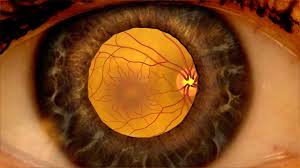Diabetic Retinopathy Treatment
چهار شنبه 8 فروردین 1397
بازدید: 1360
Diabetic retinopathy

Diabetic retinopathy is the most common vascular disease of the retina. It is caused by damage to the retinal blood vessels due to diabetic metabolic decompensation.
It can result in significant loss of vision.
Causes of diabetic retinopathy
Many diabetics – particularly those with poor diabetic control which results in too-high blood sugar levels over long periods of time – have damaged blood vessels in the retina, the tissue lining the back of the eye that detects light and allows us to see. This condition, called diabetic retinopathy, affects up to seven out of 10 patients who have had diabetes for 10 years or more.
Types of diabetic retinopathy
Many people with mild diabetic retinopathy have good vision, but there are two types of sight-threatening diabetic retinopathy: diabetic macular oedema (DMO) and proliferative diabetic retinopathy (PDR).
In DMO, fluid leaks out of the tiny damaged blood vessels in the back of the eye, and accumulates in the macula, the central part of the retina which is responsible for seeing fine details and central vision. This leads to swelling of the tissue and blurred vision. Eventually, patients with diabetic macular oedema can develop poor central vision and be unable to read or drive, but the vision to the side usually remains normal.
Proliferative diabetic retinopathy is when the retinal blood vessels close resulting in the retina being starved of blood. This causes abnormal and very fragile blood vessels to grow on the surface of the retina which can lead to permanent loss of vision from bleeding into the eye, retinal scarring and retinal detachment.
Treatment for diabetic retinopathy
A thorough ophthalmological examination is crucial, which also includes the following tests: a retina scan, optical coherence tomography, fluorescein angiography unless the patient is allergic to fluorescein, and visual field campimetry.
Some patients affected by very slight diabetic macular oedema without any symptoms may only require the condition of their eyes to be regularly monitored. In other cases intravitreal injections are required of angiogenesis inhibitors or sustained release corticosteroids, or a combination of both, to control the diabetic oedema, restore sight and prevent loss due to irreversible degenerative changes in the fine cellular layers of the retina. On very limited occasions laser photocoagulation may even be recommended close to the macular zone, carried out selectively on microaneurysms to reduce the oedema.
When the illness shows signs of progressing to a proliferative form, extensive photocoagulation becomes necessary on areas without a blood supply (ischaemic) to avoid progression to these stages with a high risk of serious complications. Not having this treatment due to a fear of laser treatment is a serious error that can result in irreversible situations.
In advanced cases, with intraocular haemorrhage and/or retinal detachment, it's necessary to resort to advanced intraocular keyhole surgery, carried out under general anaesthesia. Laser and different keyhole surgery techniques are highly effective procedures in treating diabetic retinopathy that allow us to resolve very desperate situations. However, the ideal situation would be not to reach such extremes by preventing complications in the first place.
دیدگاه های ارسال شده توسط شما، پس از تایید مدیر سایت در وب سایت منتشر خواهد شد.
پیام هایی که حاوی تهمت یا افترا باشد منتشر نخواهد شد.
پیام هایی که به غیر از زبان فارسی یا غیر مرتبط با خبر باشد منتشر نخواهد شد.